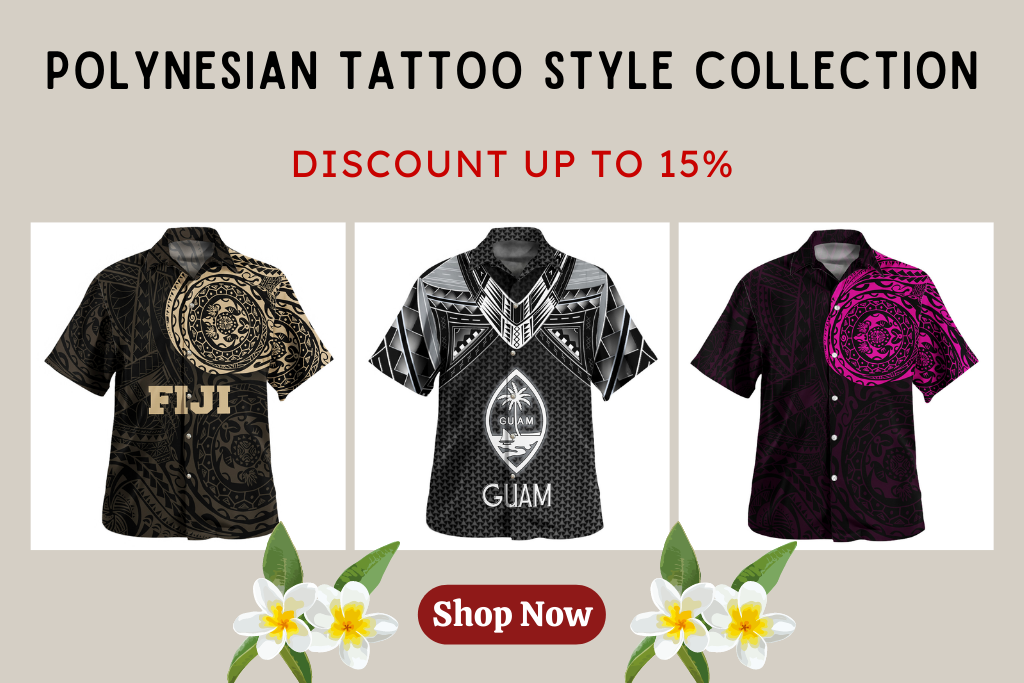10 Interesting Facts You Didn’t Know About Polynesian Tattoos
Posted by Maris on 7th Aug 2023
For good reason, Polynesian tattoos are quite popular today. The art is really stunning, and the deep origins and cultural importance offer meaning that extends far beyond mere body decoration.
Each Pacific culture has their own distinct tattoo styles and motifs, each with their own set of meanings. Many of these symbols can still be found in today’s pan-Polynesian tattoos (also known as tribal tattoos), although many of their original meanings have been lost.
The word “tattoo” has Polynesian origins.
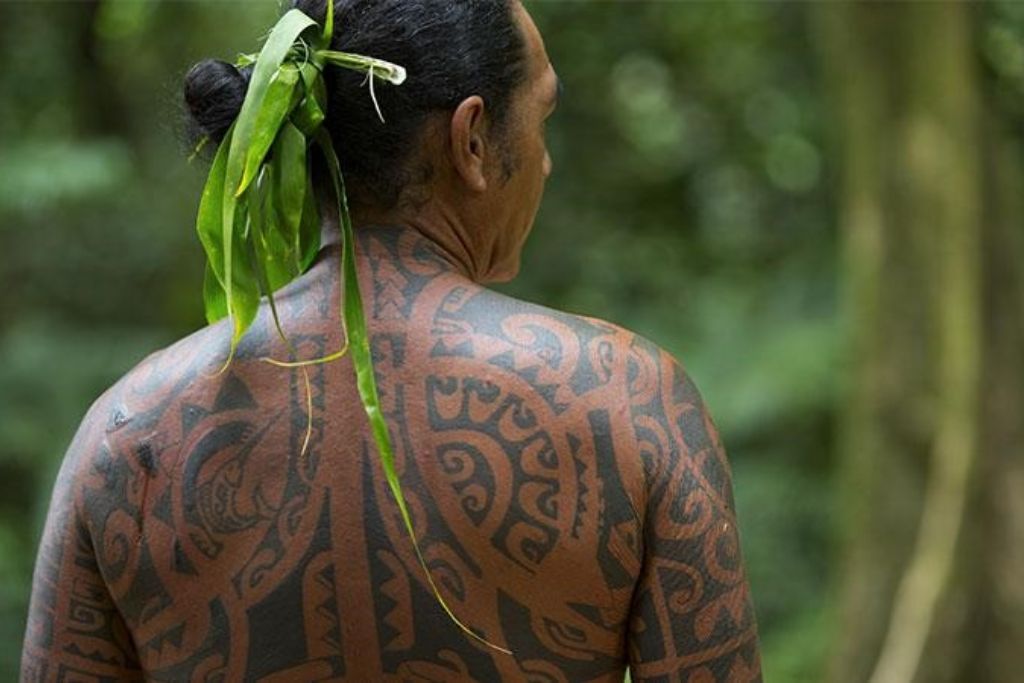
Tattoos have been seen in numerous civilizations throughout history, and they are still popular in many countries today. However, the term “tattoo” originates in Polynesia.
Tattoos were formerly referred to as “tatau” in Samoa and “tatu” in Tahiti. The term initially appears in the records of Captain James Cook’s companion, Joseph Banks.
Cook and his crew visited all of the major Polynesian Triangle islands and introduced the tattoo culture to European countries.
Ma’i, a Tahitian, even accompanied Cook’s second journey and stayed in England for years before returning home during Cook’s third voyage.
After Cook went to Europe to report his discoveries, the contemporary spelling of tattoo emerged in the late 1700s. When Merriam Webster’s dictionary introduced the term tattoo in 1777, it became official in English.
Your tattoos revealed a lot about you
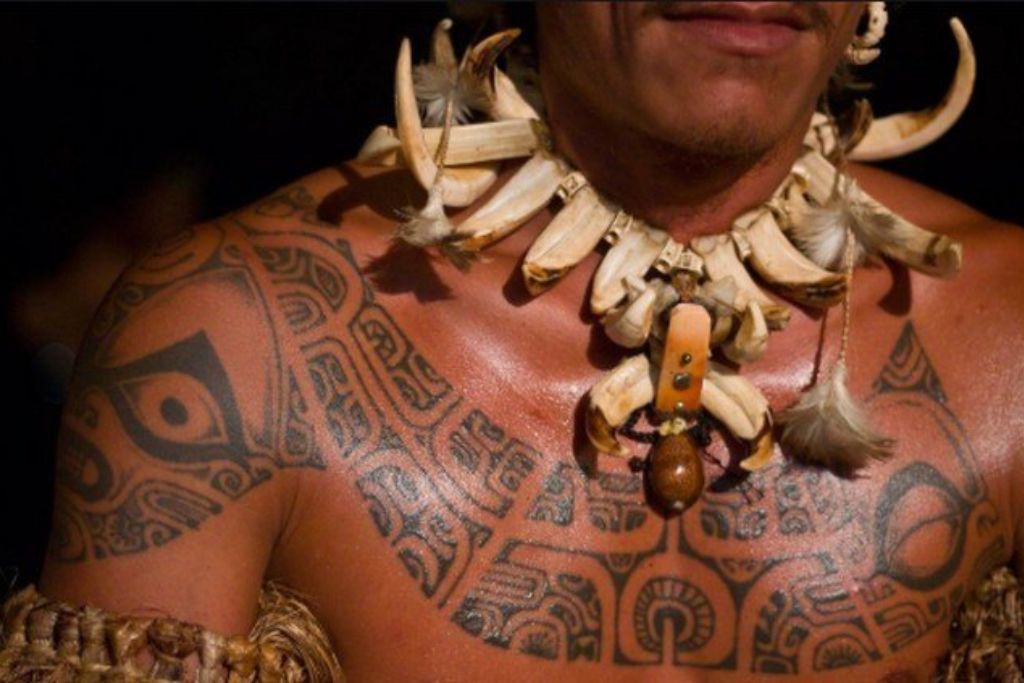
Traditional Polynesian tattoo iconography was far more sophisticated than current art. Tattoos had meanings that highlighted essential aspects of your personality.
The design of a person’s tattoo can reveal their social standing, role in the community, and even their unique family history on several Pacific Islands.
People can learn about who you are and where you came from just by glancing at your tattoo design.
Getting a tattoo also frequently signaled the beginning of adulthood. The tattoo itself was a rite of passage for the receiver, marking a pivotal point in their life.
Tribal Tattoos Have Been Used For Over 2,000 Years

Polynesian tattooing has a history dating back over 2,000 years. However, European and American missionaries, as well as native chiefs, nearly abolished the practice in the 18th and 19th centuries.
Traditional tattoo art made a reappearance in the 1980s and 1990s after being nearly wiped out on all islands except Samoa.
It was tough to bring the antique art back to life. The original significance of indigenous tattoo designs were unknown in the Pacific islands where tattooing knowledge had been lost.
Traditional tribal tattoos have been preserved thanks to the efforts of researchers, scholars, and artists. More on this will be covered in a future blog post.
Polynesian Print offers a special Polynesian Tattoo Style Collection. Discover and shop now with 15% off code: POLYBLOG15 (use code at check out)
Learning the Skill Took Years
Tattooing knowledge and technique were typically passed down from master to apprentice, who were frequently father and son. It was regarded sacred wisdom in many Pacific tribes.
The artists spent many years as apprentices, hard at work for their masters.
They frequently began by merely watching the master work before graduating to serving the artist throughout each tattoo session. Apprentices, for example, were in charge of extending the skin.
The apprentice also had to learn how to create conventional tattoo equipment and how to use them properly.
Learning the deeper meanings of tattoos in their culture was also essential.
You cannot become a tattoo artist unless you understand the specific construction and placement of the tattoo design, the significance and meanings of the motifs employed, how to select appropriate tattoo designs for a person, and the rituals and customs surrounding tattooing.
The tiny number of apprentices of the Samoan Sulu’ape family of tatau masters who have earned their place in the family and the title Sulu’ape continue this tradition today.
The tools haven’t changed much over time – but they have changed dramatically.
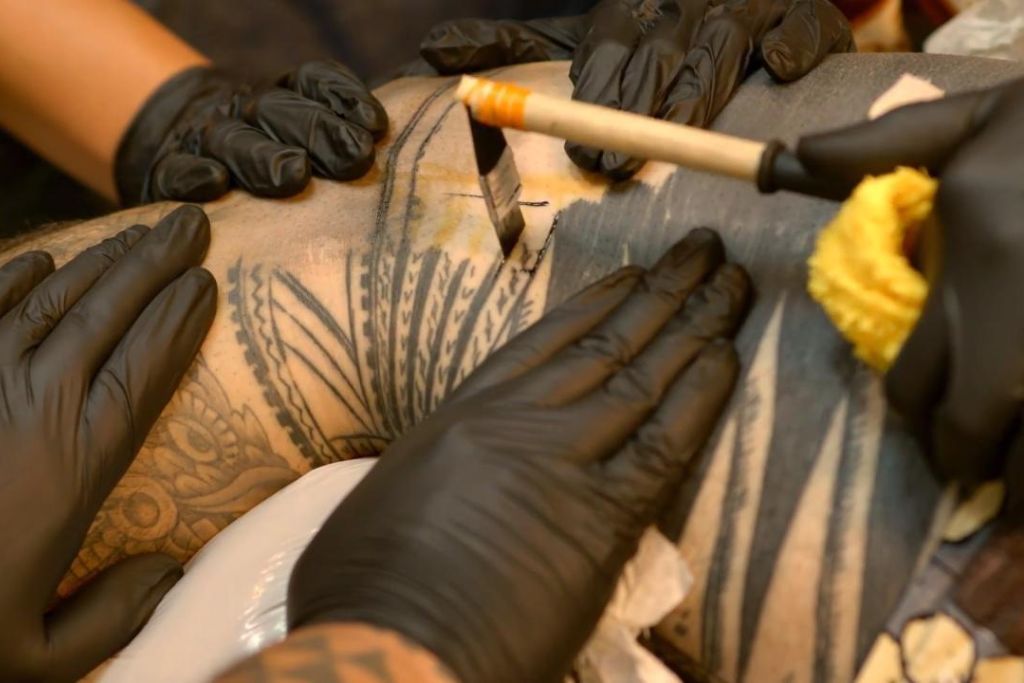
For centuries, the tools used to make these one-of-a-kind works of tattoo art remained unchanged.
Polynesians made advantage of the resources provided by nature. The tattoo’s dark hue could be derived from the soot of burnt coconut shells.
Bone, animal teeth, shell, bird beaks, or fish bone were used to puncture the skin. These were formed into comb forms or needles and connected to a bamboo or light wood staff.
The tattoo master tapped the black substance into the skin with another stick as a mallet to create the tattoo design, while an apprentice stretched the skin in the inked area.
Modern tattoo machines have mostly replaced traditional equipment, even in the tattoo shops of artists immersed in Polynesian culture. It is just quicker, faster, and less painful for the customer to apply the complicated Polynesian tattoo designs.
However, there are a few select musicians in Australia, New Zealand, Hawaii, the mainland United States, and even a few in Europe that practice the old form of hand tapping.
Getting a traditional tattoo is a significant display of pride in one’s culture for those of Polynesian descent. It is a symbol of your commitment to your culture and its customs.
Tattoos Were Expensive – Even Deadly
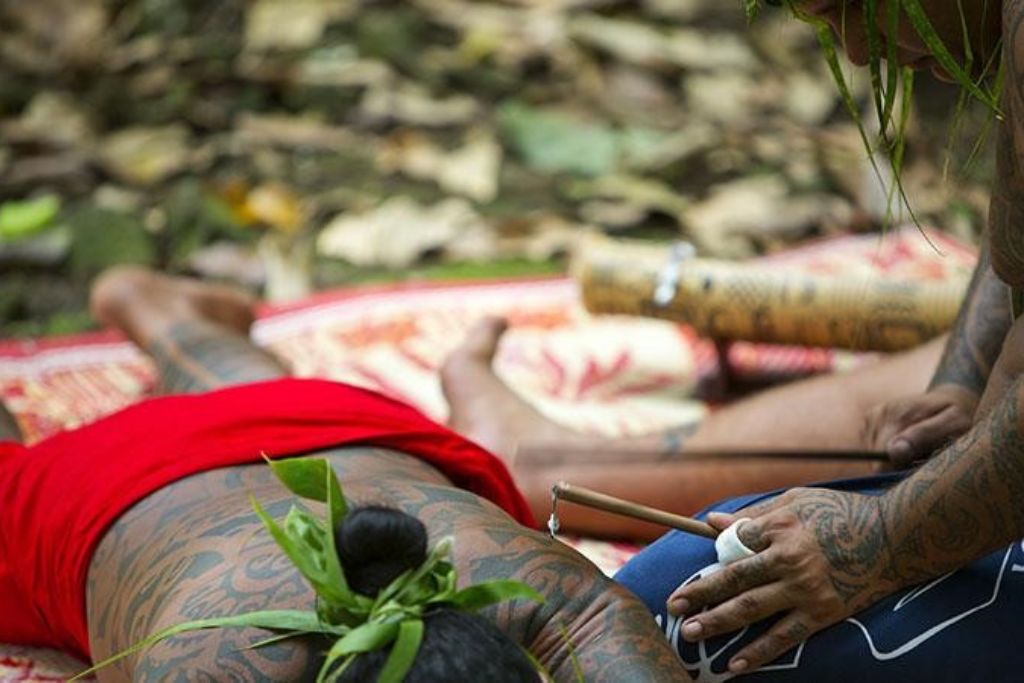
These tattoos not only took a long time to complete, but they were also exceedingly painful. Depending on which area of the body is involved, the procedure could be agonizing.
It takes a lot of fortitude and perseverance, as well as rest in between sessions.
It also required bravery because having the tattoo was risky. People have died from blood loss or infection throughout history.
As a result, waiting through the discomfort and healing process was a huge problem. The act of getting a tattoo revealed a lot about who you were on the inside and out.
It’s no surprise that simply getting a finished tattoo was a mark of your bravery, strength, and endurance!
Of course, anyone who did not finish their tattoo was considered a coward. Instead of being a symbol of their bravery, their unfinished tatau was a source of humiliation.
The Healing Process Was Just As Excruciating
While having the tattoo was uncomfortable, the healing procedure was also dangerous.
It took a long time and effort to treat the irritated skin. Sanitizing the region was not an option, and tattoo instruments were not sanitary. Infections could result from the tattoo sessions, which could be uncomfortable or even fatal.
The entire process, from having the tattoo to when it heals, could take months.
Each island has its own distinct style.
Polynesian tattoo designs come in a variety of styles. Each island in the Polynesian Triangle had its own distinct set of symbols, each with its own set of meanings.
Traditional Hawaiian, Samoan, and Tongan tattoos, for example, are easily identified by their repeated geometric shapes.
Maori tattooing features peculiar spiral motifs that are not found in other Polynesian civilizations’ designs.
Many spherical designs, arches, and circles can be seen in Tahitian and Marquesas tattoos.
One of the simplest methods to discover if a tattoo artist is knowledgeable about Polynesian tattoos is to listen to the artist’s descriptions.
Saying “Maori tattoos” while exhibiting you spear head motifs, for example, is a clear indication that the artist has never studied Polynesian tattoo traditions.
So, how likely is it that this artist is familiar with Polynesian tattoo meanings?
Most Polynesian tattoos nowadays are a combination of styles.
It’s unusual to see a tattoo that is actually in the “historic” style of one of the islands these days.
This is due to the rebirth and popularity of Polynesian tattoos, which resulted in a strong fusion of indigenous styles. The resulting tattoos are hybrids, incorporating themes from several Polynesian tattoo traditions.
For example, the Maori spiral design and the Samoan shark’s teeth motif are so common that many artists no longer consider them to be culturally specific.
At the same time, when these tattoo patterns are employed in new hybrid designs, numerous tattoo artists have given similar meanings to them.
This current Polynesian style of most tattoos seen today (including those on N KOA items) could be referred to as neo-Polynesian or pan-Polynesian tattoos.
The word tribal tattoo is also used (including on our website). But we despise having to use it. Confused? Continue reading!
Some people refer to them as tribal tattoos. However, you should not.
Yes, the word “tribal tattoo” is used. But we despise doing it. What’s the harm in calling them tribal tattoos? Read our view on it and why we do it here.


